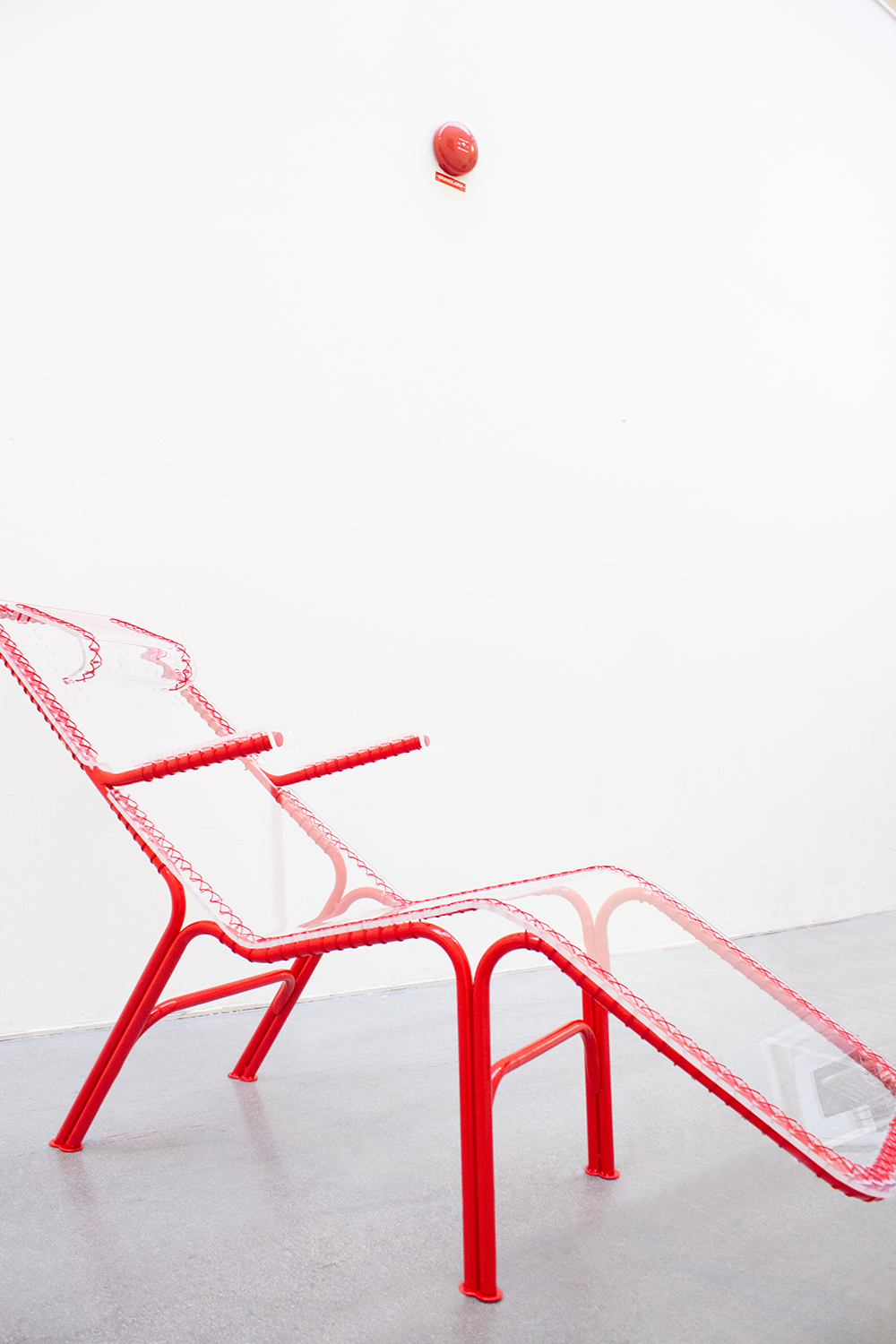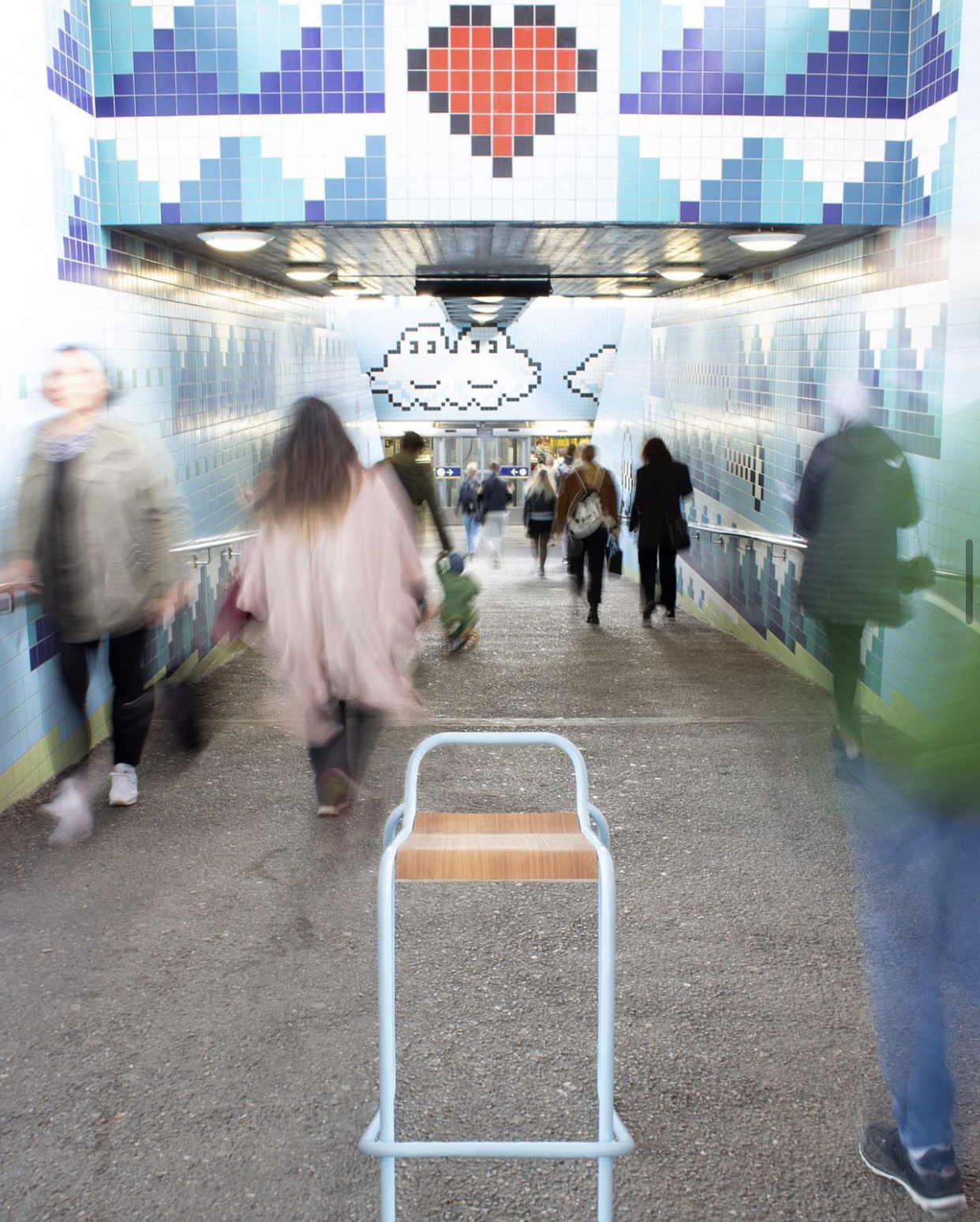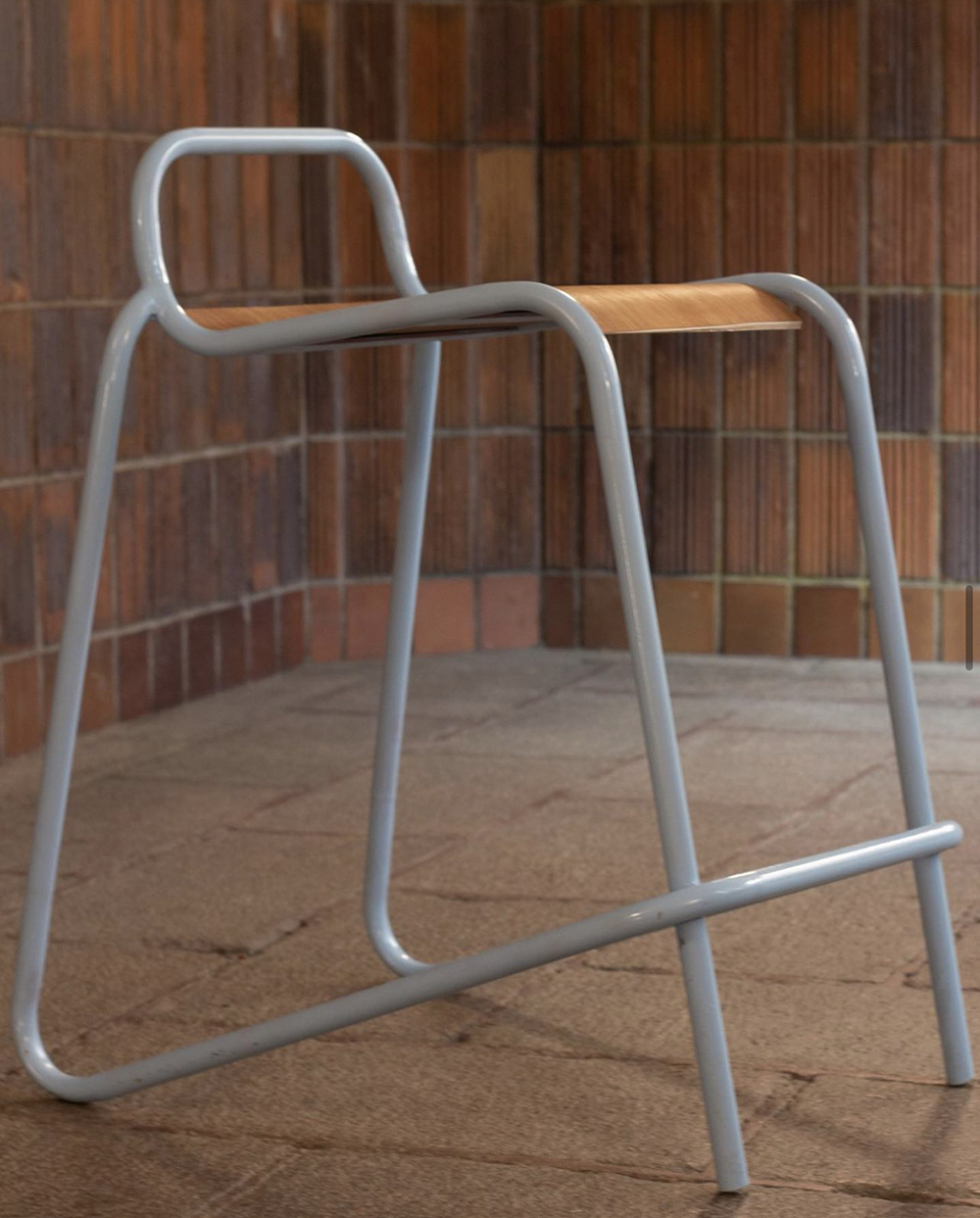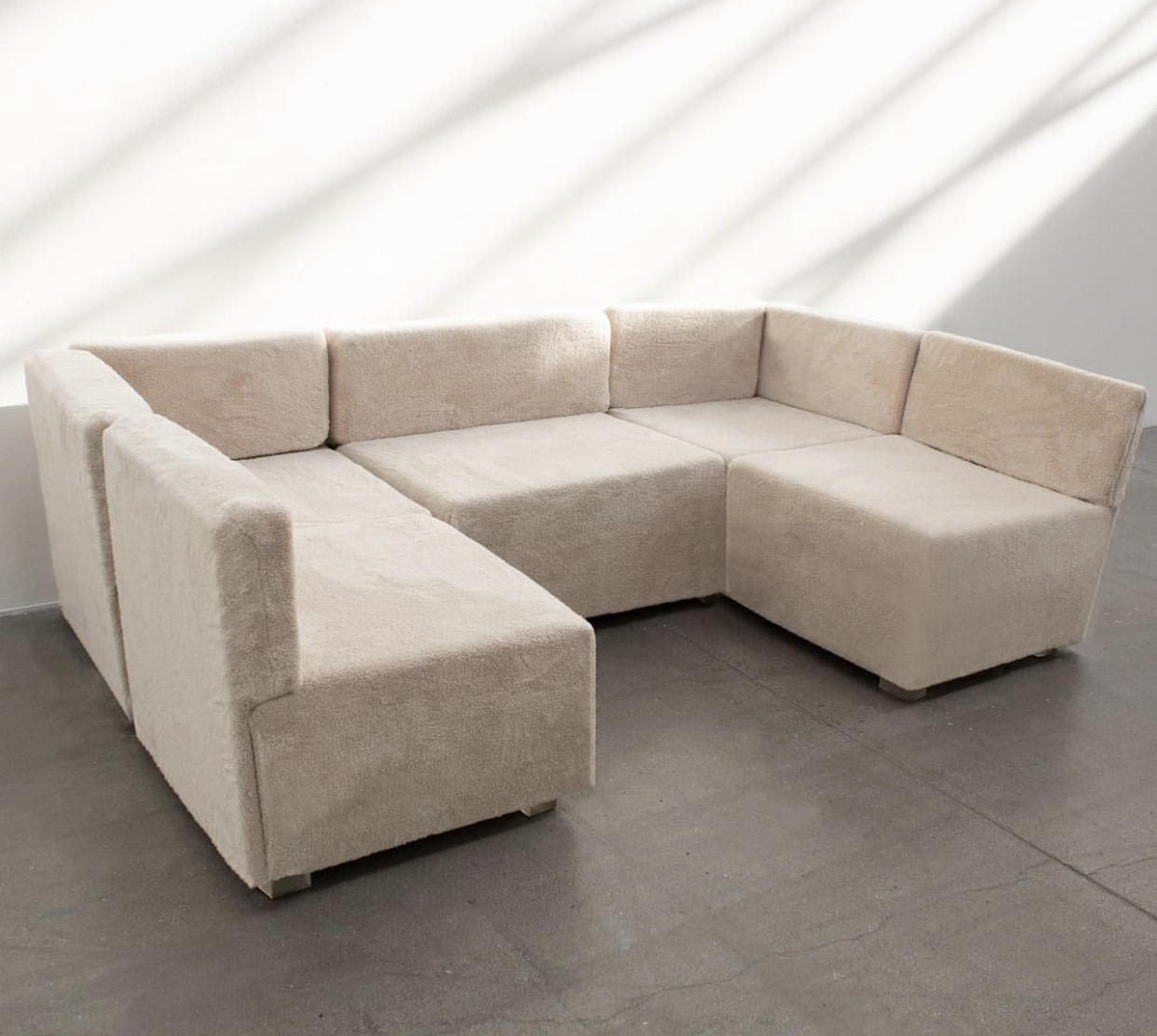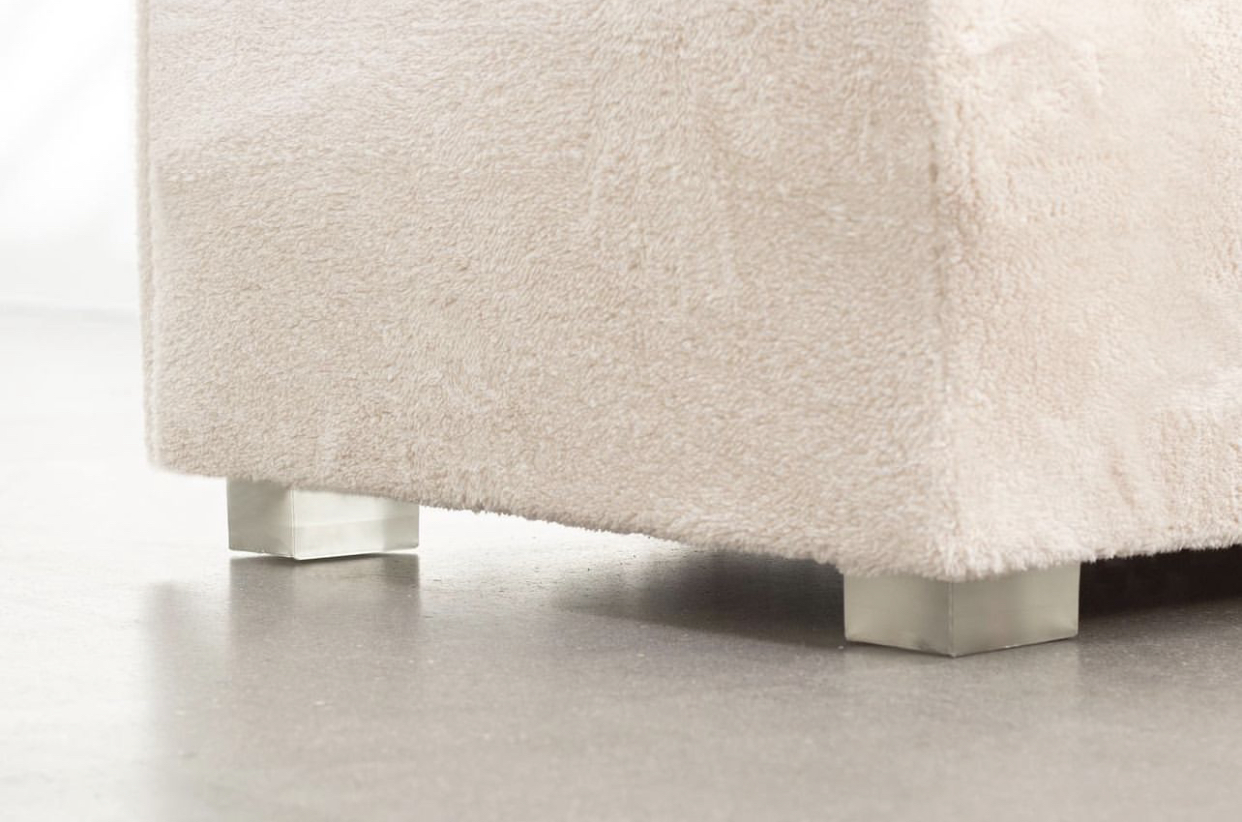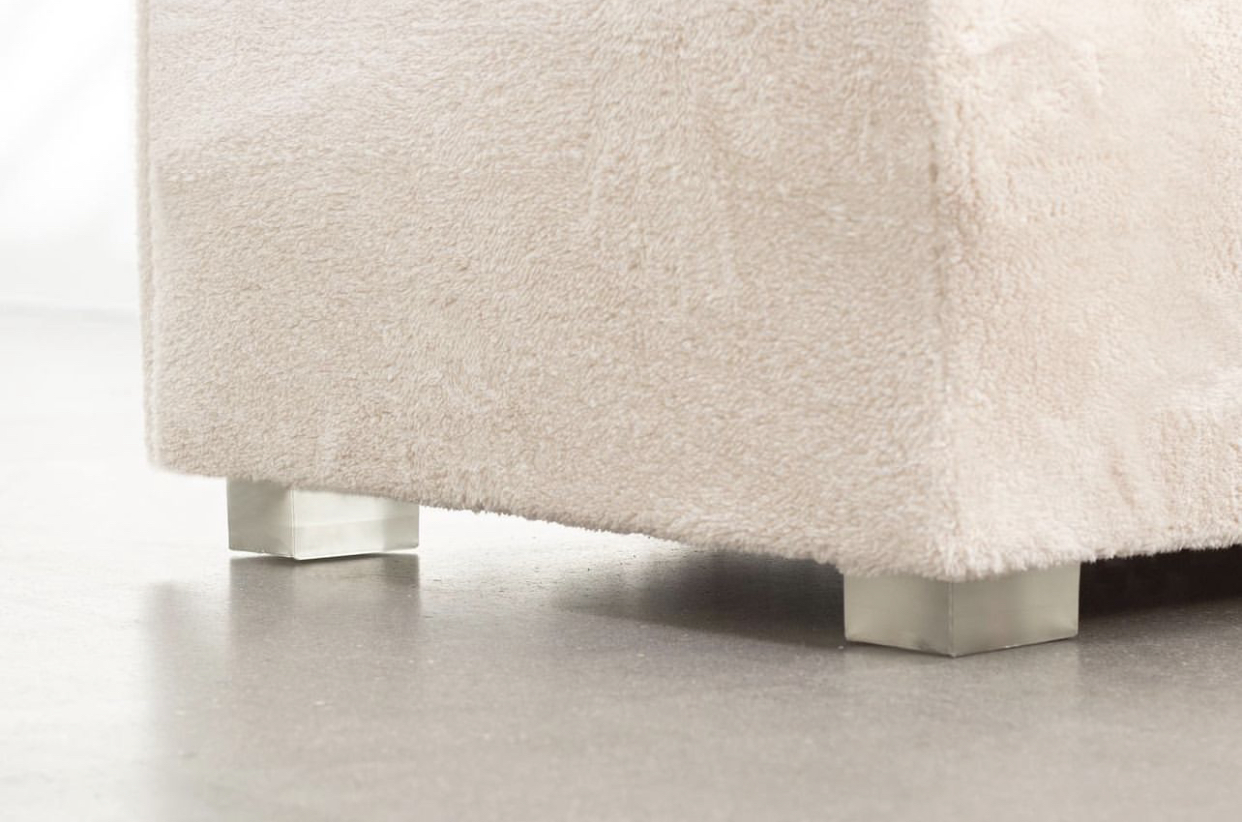“OSYNLIG” (Invisible)
- a furniture, a recliner, an activist artifact -
100% recycled acrylic plastic, steelpipe & nylon thread I wanted this piece of furniture to question norms & social structures as well as raise a discussion regarding who has been given a platform & been seen throughout history and who has access to that platform & can be seen from today. It says that this Swedish great male furniture designer layed down in a snowdrift & traced the im- print from his body to his recliners & then named them after women. I did the same thing. I layed down in a snowdrift & designed a recliner for the women according to HER angles, radii & mea- surements. I named her “Osynlig (Invicible) with a transparent surface to expose the invisibility of the female body in the design industry, cross stitch fastenings as a hommage to the invisible art of women & undercarriage in alarming red to raise a warning finger, alarm & illuminate.
Backstory:
Just as the world, politics & society throughout history has been ruled by men for men, so too have furnitures been designed by men, for men. The female designer has been made invisible & hidden behind the man, the women has often been relegated to the female-coded handicrafts, such as textiles, sewing, ceramics & glass. Note the specific word “handicrafts”, because even here, women’s art has throughout history usually been dismissed or devalued as “handicrafts” instead of men’s “fine art”. The male body is still used today as the norm when it comes to testing & designing furni- ture. Studies from the year 2022 show that women to a greater extent have problems with her neck, shoulders & back, as even adjustable office furniture is designed according to the avarage male body. The women has a 40 percent greater risk of being injured or die in a car crash, as even the crash dummies are shaped after the average male body. And about the female rest & recovering... A study that came out last fall shows that the woman does an average of 5 hours more work a week in the shared home compared to their male partner and perform 200h more unpaid work per year at their workplace than their male colleagues. The study also shows that the female worker is usually perceived as lazy & less competent if she were not to do these extra hours. With these researches, statistics & facts my focus was to design a furniture to let her heal, rest & at the same time question norms, social structures as well as raise a discussion.








